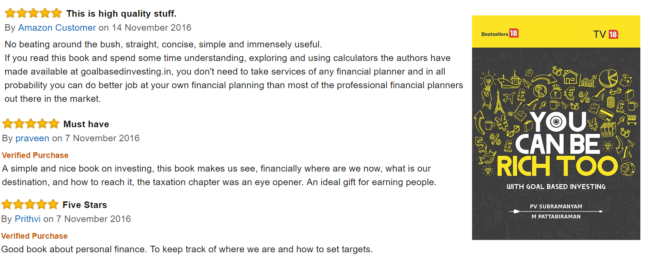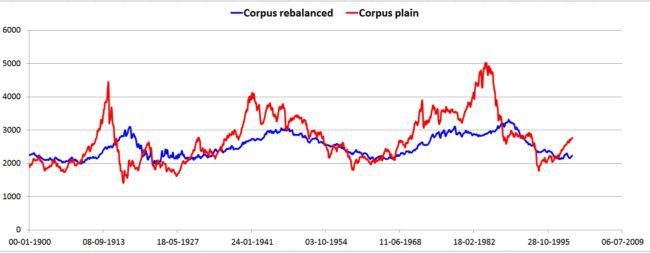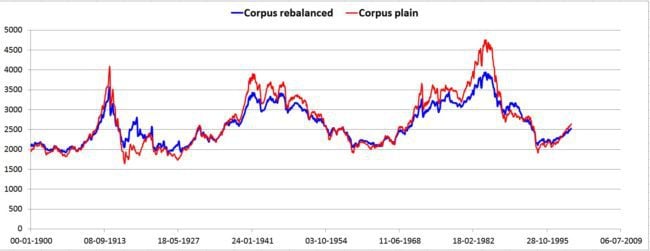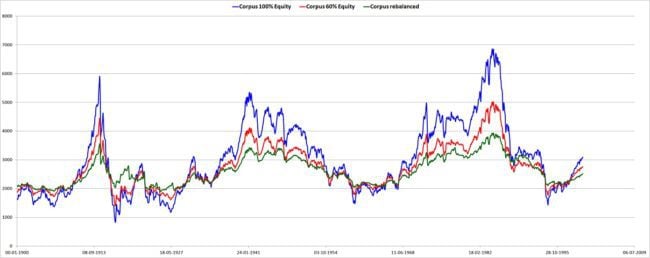Last Updated on October 8, 2023 at 5:17 pm
I am not a mutual fund salesmen. Therefore I have no problem in pointing out that a mutual fund SIP, in particular in an equity mutual fund does not reduce the risk associated with the equity market in any way. All a SIP does is buy units at different market levels. Some high, some low. No matter when you buy, the corpus accumulated is exposed to the full volatility of the market. If it crashes, then when you purchases those units (even if you did not do a SIP) will not matter.
Which is why managing the risk associated with the corpus is more important than when you buy next. A point made in the first part of this topic – Do not enter equity markets if you do not know how to get out!
If you have not read that, I request you to please head there and then come back here.
Now assuming we are all on the same page, a quick recap. Yesterday, I had considered two (of the several) de-risking strategies one can think of.
Join 32,000+ readers and get free money management solutions delivered to your inbox! Subscribe to get posts via email! (Link takes you to our email sign-up form)
🔥Want to create a complete financial plan? Learn goal-based investing? Exclusive access to our DIY tools? Increase your income with your skills? Use this link to enjoy massive discounts on our robo-advisory tool & courses! 🔥
- Returns do not matter: Something which I strongly advocate
- Changing Asset Allocation in Stages. This post presents the back-testing data associated with this method.
The study
I have considered a 15-year goal in which one invests systematically in an equity fund and a fixed income fund. For the equity fund, I have considered the S&P 500 index from Jan 1st, 1900 (Excel would not allow dates before that although data is available!). Our indices are a new-born in comparison.
For the fixed income, I could not get my hands on a US bond fund. So I have assumed a constant 3% annual return. This is not true in reality, but the idea here is to assume that the volatility of the fixed income instrument is zero when compared with the equity instrument – just about reasonable.
The S&P data was previously used in the Dollar Cost Averaging aka SIP analysis of S & P 500 and BSE Sensex. I strongly urge you to look at these results to understand how risky a SIP can be without dynamic asset allocation.
I have considered every possible 15 year period from 1900 to may 2015: 1205 data points in all.
For each period, compute the total corpus obtained
- For a fixed asset allocation of 60% equity and 40% fixed income throughout the investment tenure
- For a variable asset allocation (de-risk) as shown below. Two variants were considered in this case
- Rebalancing every year
- Rebalancing every three years.
This is a random choice with no hindsight bias associated. You could change this in any number of ways.
Rebalancing each year
Here the constant 60:40 equity:fixed-income allocation (corpus plain) is compared with variable asset allocation with annual rebalancing. Each line has 1205 data points and each data point represents a 15-year sip. The horizontal axis is the date of stating the SIP.
Backtesting with the various sequence of returns tells you how risky the past has been and that the future could be at least that risky.
Interpreting this can be tricky if you focus on the three big peaks. Please look at how much the corpus-plain swings, up to down. If the asset allocation is fixed throughout the investment tenure, then that is the risk we bear. We could end up with a much higher corpus than we desire or a much lower corpus – the danger we wish to avoid.
The dynamic asset allocation model in which equity exposure decreases as we approach the end of the 15 year period (the blue line) has a much smaller swing range. For about 40% of the 1205 periods, the blue line has a higher corpus than the red line.
No, that is not small! It is not possible to reduce risk without reducing returns. By adopting a de-risking strategy, we reduce the possibility of loss – getting a much lower corpus than desired or in this case, being found among that 40%. Of course, the 40% is not a probability and that the future could turn out worse than the past.
Diversification, asset allocation, rebalancing and de-risk are risk reduction methods. They may also reduce returns. Read more: Diversification will lower investment returns!
Rebalancing every three years
If you think rebalancing every year is a pain from the point of view of tax and exit loads, you do so less frequently or even consider threshold rebalancing – do nothing unless your asset allocation deviates by 5% or 10%. Here I consider triennial rebalancing – once every 3 years.
Now the blue line follows the red line more closely.
To put this in perspective, the returns with the always-100% equity folio (blue line) is compared with the always-60% equity folio (red line) and variable asset allocation with triennial rebalancing (green line)
Here again, the reduction in risk and reduction is obvious.
Two things are to be borne in mind:
- No one (practically) is going to make this kind of comparison with our portfolios. We just adopt a strategy, adjust to it (instead of adjusting it!) and make do.
- It is easier said that done to claim that one can do better than this by alternative methods. In real-time, all rules can fly out the window! Which is why I prefer keeping the goal in mind without worrying about the return.
We have to choose a method and see how it goes. The only message from this post is that a method is necessary and that
- Systematic investments do not reduce risk, but
- it is possible to systematically reduce the risk associated with a systematic investment!
Feel to let me know if you require clarifications on this study. Personally, I prefer a combination of both de-risking ideas considered yesterday.
Planning this beforehand
Please use the Financial Goal Planner with Flexible Asset Allocation for planning asset allocation changes before hand. This will ensure the right amount is invested.This calculator is for multiple portfolios. You can be rich too with goal-based investing, our new book has a calculator for a single portfolio.
 If you have read the book, please consider posting a review at Amazon.in or Flipkart or at Goodreads. If you have not purchased it yet, you can so via Amazon.in (Rs. 359) or Flipkart(Rs. 359) or Bookadda (Rs. 339). Infibeam(Rs. 307) or Sapnaonline.com(Rs. 339).
If you have read the book, please consider posting a review at Amazon.in or Flipkart or at Goodreads. If you have not purchased it yet, you can so via Amazon.in (Rs. 359) or Flipkart(Rs. 359) or Bookadda (Rs. 339). Infibeam(Rs. 307) or Sapnaonline.com(Rs. 339).
Related Reading
Simple Steps to De-risk Your Investment Portfolio
A Mutual Fund SIP or STP do not minimise investment risk!

Use our Robo-advisory Tool to create a complete financial plan! ⇐More than 3,000 investors and advisors use this! Use the discount code: robo25 for a 20% discount. Plan your retirement (early, normal, before, and after), as well as non-recurring financial goals (such as child education) and recurring financial goals (like holidays and appliance purchases). The tool would help anyone aged 18 to 80 plan for their retirement, as well as six other non-recurring financial goals and four recurring financial goals, with a detailed cash flow summary.
🔥You can also avail massive discounts on our courses and the freefincal investor circle! 🔥& join our community of 8000+ users!
Track your mutual funds and stock investments with this Google Sheet!
We also publish monthly equity mutual funds, debt and hybrid mutual funds, index funds, and ETF screeners, as well as momentum and low-volatility stock screeners.
You can follow our articles on Google News

We have over 1,000 videos on YouTube!

Join our WhatsApp Channel



- Do you have a comment about the above article? Reach out to us on Twitter: @freefincal or @pattufreefincal
- Have a question? Subscribe to our newsletter using the form below.
- Hit 'reply' to any email from us! We do not offer personalised investment advice. We can write a detailed article without mentioning your name if you have a generic question.
Join 32,000+ readers and get free money management solutions delivered to your inbox! Subscribe to get posts via email! (Link takes you to our email sign-up form)
About The Author
 Dr M. Pattabiraman (PhD) is the founder, managing editor and primary author of freefincal. He is an associate professor at the Indian Institute of Technology, Madras. He has over 13 years of experience publishing news analysis, research and financial product development. Connect with him via Twitter(X), LinkedIn, or YouTube. Pattabiraman has co-authored three print books: (1) You can be rich too with goal-based investing (CNBC TV18) for DIY investors. (2) Gamechanger for young earners. (3) Chinchu Gets a Superpower! for kids. He has also written seven other free e-books on various money management topics. He is a patron and co-founder of “Fee-only India,” an organisation promoting unbiased, commission-free, AUM-independent investment advice.
Dr M. Pattabiraman (PhD) is the founder, managing editor and primary author of freefincal. He is an associate professor at the Indian Institute of Technology, Madras. He has over 13 years of experience publishing news analysis, research and financial product development. Connect with him via Twitter(X), LinkedIn, or YouTube. Pattabiraman has co-authored three print books: (1) You can be rich too with goal-based investing (CNBC TV18) for DIY investors. (2) Gamechanger for young earners. (3) Chinchu Gets a Superpower! for kids. He has also written seven other free e-books on various money management topics. He is a patron and co-founder of “Fee-only India,” an organisation promoting unbiased, commission-free, AUM-independent investment advice.Our flagship course! Learn to manage your portfolio like a pro to achieve your goals regardless of market conditions! ⇐ More than 3,500 investors and advisors are part of our exclusive community! Get clarity on how to plan for your goals and achieve the necessary corpus no matter the market condition!! Watch the first lecture for free! One-time payment! No recurring fees! Life-long access to videos! Reduce fear, uncertainty and doubt while investing! Learn how to plan for your goals before and after retirement with confidence.
Increase your income by getting people to pay for your skills! ⇐ More than 800 salaried employees, entrepreneurs and financial advisors are part of our exclusive community! Learn how to get people to pay for your skills! Whether you are a professional or small business owner seeking more clients through online visibility, or a salaried individual looking for a side income or passive income, we will show you how to achieve this by showcasing your skills and building a community that trusts and pays you. (watch 1st lecture for free). One-time payment! No recurring fees! Life-long access to videos!
Our book for kids: “Chinchu Gets a Superpower!” is now available!


Must-read book even for adults! This is something that every parent should teach their kids right from their young age. The importance of money management and decision making based on their wants and needs. Very nicely written in simple terms. - Arun.Buy the book: Chinchu gets a superpower for your child!
How to profit from content writing: Our new ebook is for those interested in getting a side income via content writing. It is available at a 50% discount for Rs. 500 only!
Do you want to check if the market is overvalued or undervalued? Use our market valuation tool (it will work with any index!), or get the Tactical Buy/Sell timing tool!
We publish monthly mutual fund screeners and momentum, low-volatility stock screeners.
About freefincal & its content policy. Freefincal is a News Media organisation dedicated to providing original analysis, reports, reviews and insights on mutual funds, stocks, investing, retirement and personal finance developments. We do so without conflict of interest and bias. Follow us on Google News. Freefincal serves more than three million readers a year (5 million page views) with articles based only on factual information and detailed analysis by its authors. All statements made will be verified with credible and knowledgeable sources before publication. Freefincal does not publish paid articles, promotions, PR, satire or opinions without data. All opinions will be inferences backed by verifiable, reproducible evidence/data. Contact Information: To get in touch, please use our contact form. (Sponsored posts or paid collaborations will not be entertained.)
Connect with us on social media
- Twitter @freefincal
- Subscribe to our YouTube Videos
- Posts feed via Feedburner.
Our publications
You Can Be Rich Too with Goal-Based Investing
 Published by CNBC TV18, this book is designed to help you ask the right questions and find the correct answers. Additionally, it comes with nine online calculators, allowing you to create custom solutions tailored to your lifestyle. Get it now.
Published by CNBC TV18, this book is designed to help you ask the right questions and find the correct answers. Additionally, it comes with nine online calculators, allowing you to create custom solutions tailored to your lifestyle. Get it now.Gamechanger: Forget Startups, Join Corporate & Still Live the Rich Life You Want
 This book is designed for young earners to get their basics right from the start! It will also help you travel to exotic places at a low cost! Get it or gift it to a young earner.
This book is designed for young earners to get their basics right from the start! It will also help you travel to exotic places at a low cost! Get it or gift it to a young earner.Your Ultimate Guide to Travel
 This is an in-depth exploration of vacation planning, including finding affordable flights, budget accommodations, and practical travel tips. It also examines the benefits of travelling slowly, both financially and psychologically, with links to relevant web pages and guidance at every step. Get the PDF for Rs 300 (instant download)
This is an in-depth exploration of vacation planning, including finding affordable flights, budget accommodations, and practical travel tips. It also examines the benefits of travelling slowly, both financially and psychologically, with links to relevant web pages and guidance at every step. Get the PDF for Rs 300 (instant download)


